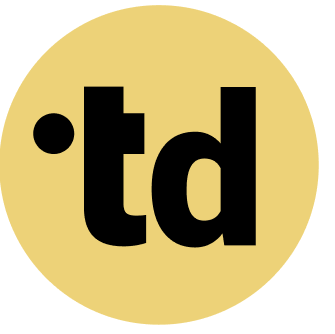Key Takeaways
Over 90 percent of companies face challenges integrating AI, making specialized tools for modeling human and AI roles essential for success.
Clear role definition is critical, as it can reduce project timelines by up to 25 percent and minimize team friction.
The upcoming EU AI Act classifies HR and management AI as high-risk, requiring transparent role design and human oversight for compliance.
The world of work is changing at a dizzying pace, with 72 percent of European companies now using AI in their HR functions. This rapid shift leaves many teams feeling the strain of undefined roles and chaotic workflows. For Team Architects-the consultants, HR leaders, and founders building tomorrow's organizations-the challenge is clear: how do you design a team where humans and AI not only coexist but collaborate seamlessly? This isn't just about managing technology; it's about rethinking team structures from the ground up. This guide provides the tools and frameworks to turn integration chaos into collaborative clarity, making change feel like play.
The New Hybrid Overload: Why Teams Just Wanna Have Fun (But Can't)
The pressure to integrate AI is immense, with nearly eight out of ten leaders viewing it as essential for staying competitive. Yet, this rush to adopt has created significant change fatigue, as 60 percent of leaders admit their organization lacks a clear vision for implementation. This leaves teams wrestling with new AI agents and legacy processes, a combination that drains energy and stifles the fun of creative work. In Germany, over 90 percent of job applicants expect a greater AI presence, but the strategy for managing this shift lags behind.
This gap between expectation and reality creates friction and uncertainty, turning promising technology into a source of team-wide stress. Many organizations overlook that only a few employees using AI have received any formal training from their company. The result is a workforce trying to build the future with yesterday's blueprints. This is where modern hybrid team (humans and AI agents) structures become critical. Before you can achieve flow, you must first address the foundational cracks in your organizational development.
Old Tools, New Problems: When Static Org Charts Don't Click
Traditional organizational charts are failing our new hybrid reality. More than 90 percent of enterprises report significant challenges when integrating AI into their existing tech stack and workflows. These static, top-down diagrams cannot capture the fluid, task-based collaboration that defines successful human-AI teams. They show reporting lines, not the dynamic handoffs and shared responsibilities that get work done day-to-day. This mismatch is a key reason why many companies struggle to get scalable value from their AI investments.
Relying on an old org chart to manage a hybrid team is like using a paper map for real-time traffic navigation. It shows a structure, but it completely misses the dynamic interactions happening every minute. For modern leaders, this outdated approach leads to duplicated work and missed deadlines, with one agency cutting project timelines by some simply by clarifying roles. Effective AI and human role management requires a more agile solution.
Architecting Clarity: The Blueprint for Human-AI Collaboration
To build a successful hybrid team, Team Architects must shift their focus from fixed job titles to fluid responsibilities. This approach to organizational development is grounded in clarity, ensuring every human and AI agent has a well-defined purpose. A lack of role clarity is proven to hamper day-to-day work and can even increase employee turnover. By defining roles, you empower your team and streamline decision-making, a key factor in agile environments.
Here are some tips for designing your hybrid team:
- Our Playful Tip: Map the entire workflow before assigning any roles to identify bottlenecks and opportunities for AI agent integration.
- Our Playful Tip: Define roles based on outcomes and accountabilities, not just a list of tasks.
- Our Playful Tip: Clearly document the handoff points between human and AI contributors to prevent dropped balls.
- Our Playful Tip: Designate a human role for overseeing AI performance and ethical considerations, a requirement under the EU AI Act.
Deep Dive: The upcoming EU AI Act classifies many HR and management AI systems as high-risk, demanding strict transparency and human oversight. This makes proactive workflow design a matter of compliance, not just efficiency. Adopting these principles prepares your team for the future of work.
Your Magical Toolkit: Introducing teamdecoder
Conquering hybrid team chaos requires a tool built for this new era of work. Meet teamdecoder, the platform designed to help Team Architects model, visualize, and manage complex human-AI workflows. It moves beyond static charts to create a dynamic map of roles and responsibilities, showing exactly how work flows between people and bots. This clarity is the first step in effective strategy operationalization. With teamdecoder, you can try for free and start building a resilient, high-performing team today.
The platform serves as a single source of truth, reducing the confusion that many employees feel from overwhelming workloads. It provides the repeatable toolkits and templates that consultants and internal enablers need to drive transformation. Whether you are scaling a startup or restructuring a department, teamdecoder provides the foundation for robust AI collaboration planning. This visibility is the key to unlocking your team's full potential.
Make Bots and Humans Click: A Five-Step Playbook
Bringing humans and AI together is a design challenge that requires a clear and repeatable process. With 70 With many Europeans believing AI improves productivity, a structured approach ensures you capture those gains without the chaos.ybook helps Team Architects lead the charge in building truly integrated and effective hybrid teams.
Follow these five steps to create seamless collaboration:
- Identify Repetitive Tasks: Analyze current workflows to pinpoint processes suitable for AI automation, freeing up human creativity.
- Define AI Agent Roles: Clearly document what each AI tool is responsible for, its limitations, and its performance metrics.
- Model Human-in-the-Loop Workflows: Use a tool to visualize how humans will interact with AI, focusing on oversight, exception handling, and final approval.
- Establish Governance and Training: Create clear guidelines for AI use and provide training to ensure AI literacy, a mandate that becomes effective in February 2025 under the EU AI Act.
- Test, Refine, and Scale: Start with a pilot project to test your new task allocation model, gather feedback, and refine roles before scaling across the organization.
This structured approach to change management demystifies AI integration and empowers your team to adapt confidently.
The Payoff: From Team Overload to Strategic Flow
When roles are clearly modeled, the entire team wins. The constant question of "who does what?" disappears, replaced by a shared understanding that boosts efficiency and morale. Teams with high role clarity see fewer conflicts and faster, more strategic decision-making. This clarity transforms the workplace from a source of overload into a state of productive flow, directly impacting your bottom line. In Germany, the Digitalization Index for large companies reached 203.4 points in 2024, showing a clear commitment to digital processes.
The ultimate benefit is a resilient, agile organization where humans are elevated by technology, not replaced by it. By using the right software for modeling roles, you create a system where people can focus on high-value strategic work. This is how you build a competitive edge that lasts. Now that the roles are clear, the team is finally free to innovate. #TeamArchitecture #HybridTeam #OrganizationalDevelopment #NewLeadership
Try teamdecoder for free - shape your team and make change feel like play! See our pricing
More Links
German Federal Ministry of Labour and Social Affairs offers a brochure detailing work with artificial intelligence.
German Federal Ministry of Labour and Social Affairs' think tank provides a report on technology scenarios and the impact of generative AI on work until 2030.
acatech (German National Academy of Science and Engineering) has published on using AI to foster greater inclusion in the world of work.
Fraunhofer IAO offers insights into human-centered AI and its application in the workplace.
Federal Statistical Office of Germany provides statistics on Information and Communication Technology (ICT) within companies and the ICT sector.
Bertelsmann Foundation presents a publication on AI jobs in Germany, noting a stagnation rather than a boom.
German Trade Union Confederation (DGB) shares information regarding digitalization in the world of work.
FAQ
What is a human-in-the-loop system?
A human-in-the-loop (HITL) system combines human intelligence with artificial intelligence. In this model, the AI handles the bulk of the data processing or repetitive tasks, but a human provides oversight, validates the results, and handles exceptions or complex cases the AI cannot manage alone.
How does teamdecoder help with AI agent integration?
Teamdecoder provides a visual platform to map out your team's workflows, including the roles played by AI agents. It helps you define what tasks an AI is responsible for, how it interacts with human team members, and who is accountable for its oversight, ensuring a clear and efficient hybrid structure.
Is AI going to replace jobs in Germany?
While 27.1% of German companies anticipate some job cuts due to AI over the next five years, the focus is shifting toward redefining roles. The goal is to augment human capabilities, allowing people to focus on strategic, creative, and complex problem-solving tasks while AI handles more routine work.
What does the EU AI Act mean for team management?
The EU AI Act requires companies to be transparent about how they use AI in the workplace, especially for high-risk applications like recruitment and performance monitoring. It mandates clear documentation, risk assessments, and human oversight, making structured tools for modeling roles more important than ever for compliance.
How can I prepare my team for more AI collaboration?
Start by fostering AI literacy and providing training, as only 39% of employees currently receive it from their companies. Use a tool to clearly define and communicate how AI will be integrated into workflows. This reduces uncertainty and empowers your team to work alongside AI effectively.
What is the first step in modeling human and AI roles?
The first step is to map your existing workflows from start to finish. This allows you to identify inefficiencies and pinpoint the specific tasks that are best suited for AI automation. Once you have that clarity, you can begin to model the new hybrid roles and responsibilities.





